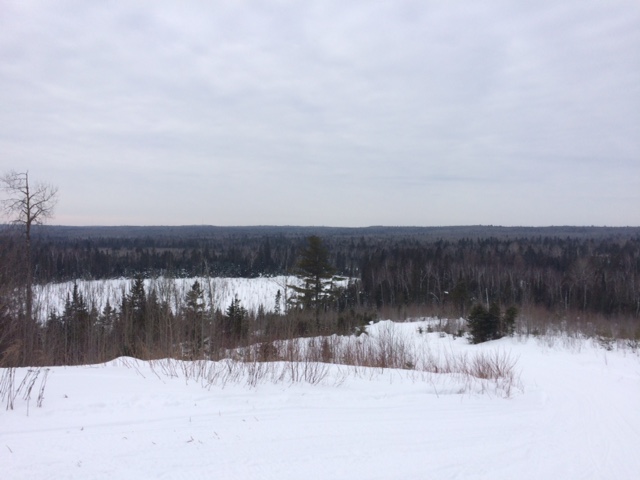 I know that ideally every snowmobiler would like to wake up every morning in a cabin in the mountains somewhere and open the door to see a fresh blanket of powder awaiting them, but in the real world we have jobs and places to be, and snowmobiling is our escape from that world. Some of us live in big cities and travel every weekend to enjoy our sport, but there are some of us that actually live in some of the places that everyone else travels to each winter. The snowmobiletrail.com staff are lucky enough to live and work in one of those places- Northeast Minnesota. The snowmobiletrail.com headquarters is literally a stone’s throw away from the state trail and for the most of the season the only travel we do to go for a ride is to walk from our front door to the garage. This week we are posing a question to all of the snowmobilers out there: If you had your choice to live in one of these two areas which one would you choose- Northeast Minnesota or Michigan’s Upper Peninsula?
I know that ideally every snowmobiler would like to wake up every morning in a cabin in the mountains somewhere and open the door to see a fresh blanket of powder awaiting them, but in the real world we have jobs and places to be, and snowmobiling is our escape from that world. Some of us live in big cities and travel every weekend to enjoy our sport, but there are some of us that actually live in some of the places that everyone else travels to each winter. The snowmobiletrail.com staff are lucky enough to live and work in one of those places- Northeast Minnesota. The snowmobiletrail.com headquarters is literally a stone’s throw away from the state trail and for the most of the season the only travel we do to go for a ride is to walk from our front door to the garage. This week we are posing a question to all of the snowmobilers out there: If you had your choice to live in one of these two areas which one would you choose- Northeast Minnesota or Michigan’s Upper Peninsula?
THE CASE FOR NORTHEAST MINNESOTA: Northeast Minnesota will never claim to be like the mountains or the UP, but what it does have going for it is cold and occasional Lake Effect Snow. Northeast Minnesota doesn’t get huge amounts of snow (On average 84 inches a year) but winter comes earlier and stays longer. Early in the season before there is adequate snow elsewhere, Northeast Minnesota not only gets its usual Southern Minnesota traffic but it gets traffic from the UP and Wisconsin as well. The same can be said late in the season when our friends further south start getting 40 degree temperatures and rain, Northeast Minnesota is still getting snow and once again we are flooded with snowmobilers seeking the last traces of winter. The disadvantage is that if conditions aren’t right we can suffer from an extreme lack of snow and the season can be short or not take place at all.
THE CASE FOR THE UP: The answer here is simple- Lake Effect Snow- insane amounts of it, in some areas as much as 300 inches of snow in a season- for those of you keeping track at home that is a whopping 25 feet of snow! In the UP snow may come late but you are virtually guaranteed good riding conditions for the entire season once it shows up.
So the question is, which one do you choose? Northeast Minnesota, where you can get a very long season but no guarantee that you will have adequate snow every year or the UP where the season may be shorter but you are virtually guaranteed to have good snow every day once it starts. We want to know. Go to our Facebook page https://www.facebook.com/snowmobiletrailcom/ and put your answer in the comment section and tell us why. Thanks again let’s keep our fingers crossed for a good year!
